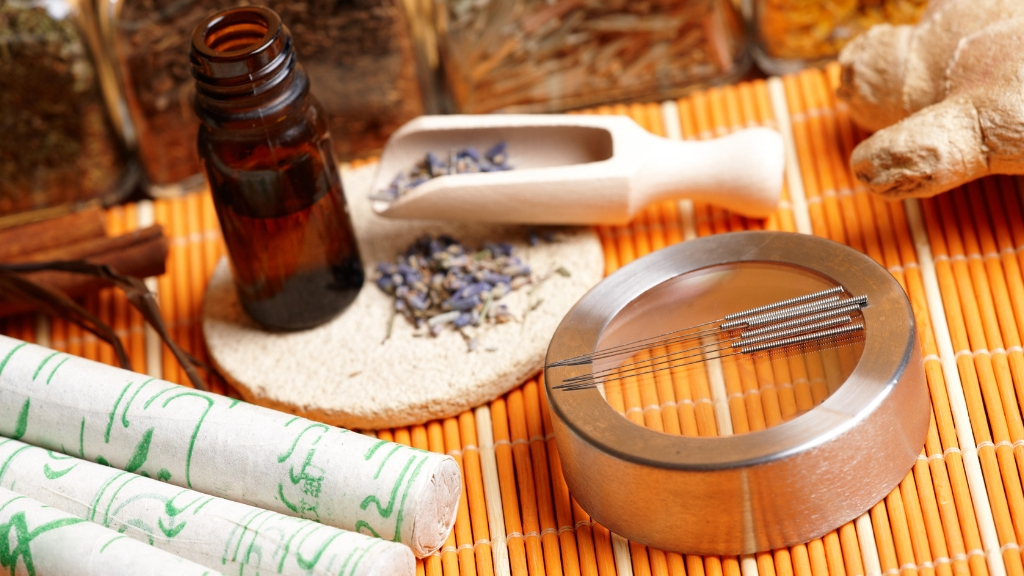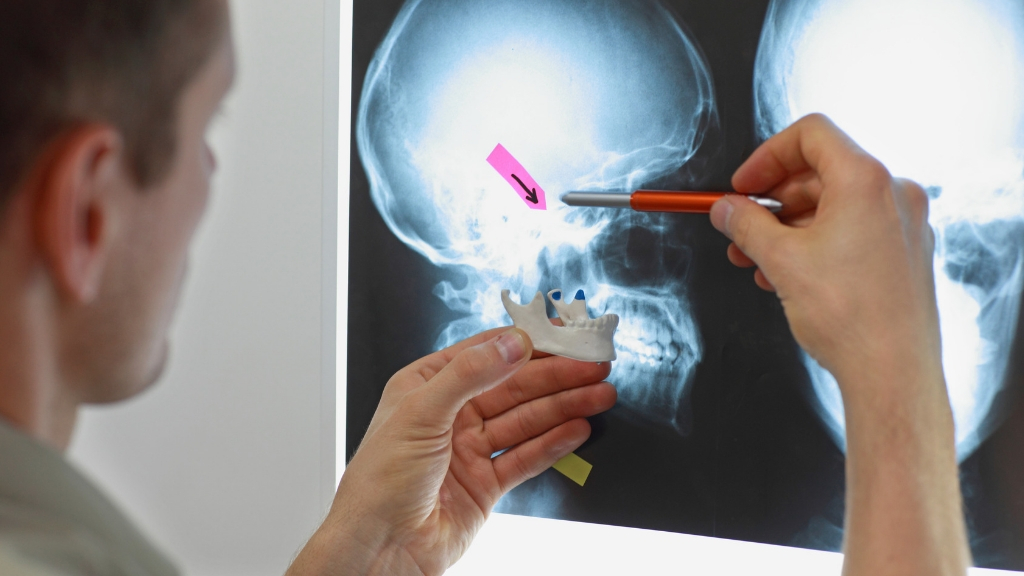Is Your Jaw Clicking a Sign of a TMJ Disorder? Symptoms & Treatment
7 minute read
Knees and elbows usually take the spotlight, but your jaw is an often-overlooked but extremely important joint. The temporomandibular joint (TMJ) is what connects your lower jaw (mandible) to your skull, and it is what allows you to speak and eat. To say keeping this joint healthy is important would be a bit of an understatement.
It’s estimated that up to 12% of the population deals with TMJ disorders. That’s almost 4 million people, so if you’re experiencing pain in your jaw, you’re definitely not alone.
Spotting the warning signs of a problem are important, and these can be as seemingly benign as a little clicking sound in the jaw. Here is what you need to know.
TMJ 101: What Causes TMJ Disorders?
The TMJ is located on either side of your head in front of your ears. If you feel around in the area while opening and closing your mouth, you can feel it at work.
TMJ disorder refers to any health problems associated with the joint, which can include pain, stiffness, and a clicking or popping noise. The joint may even lock, which can make it difficult to open and close your mouth.
The TMJ is a complex structure that is made up of the bone of your mandible and skull, membranes, cartilage, a disk, and ligaments. As such an intricate structure, the cause of pain in the TMJ can be difficult to determine. It’s thought to be due to a variety of factors that include arthritis, injury to the joint, and erosion of that special cushiony disk.

There are other risk factors that are associated with TMJ, such as grinding your teeth, though it’s not thought to be a direct cause. Even if you habitually grind your teeth, it may not lead to TMJ.
Some connective tissue diseases may also result in jaw pain and a TMJ disorder, though more often it’s a result of a combination of things.
What Are the Symptoms of a TMJ Disorder?
Depending on how severe your TMJ disorder is and what the cause or causes are, your symptoms may include any of the following:
♦ Pain in the jaw
♦ Pain in one or both of the temporomandibular joints
♦ Difficulty or pain while chewing
♦ Facial pain
♦ Ache in or around your ear
♦ Locking of the joint
♦ Popping or grating while moving the joint, though if there’s no pain involved, you probably don’t need treatment
The pain associated with a TMJ disorder may go away on its own, but if it doesn’t, or if the movement of your jaw is compromised, it may be time to talk to your doctor.
At the Doctor’s Office
You can expect a few different things when you go to your doctor or dentist for a TMJ disorder.

First and foremost, they will perform a physical exam. You’ll open and close your jaw so that they can observe any noise that it makes, your range of motion, and if it feels out of the ordinary when it moves. They’ll also press on and around your jaw to see where you have pain or discomfort.
You may need to have dental X-rays or CT scans done to see if the structure of your teeth and bones are causing you pain, and you may also need to have an MRI of your jaw taken so that your doctor can take a look at the disk in your TMJ.
You can help your doctor by taking note of things, like when the pain began, if you’re more stressed than usual, what triggers the pain, and if you’ve ever had this happen before.
Treatments for TMJ Disorders
There are several treatment options available for TMJ disorders varying from lifestyle changes to surgery.
Fortunately, home remedies are often very effective, and even when you do need to go to the doctor, invasive procedures like surgery are often not required.
Things that you can do on your own include:
♦ Taking over-the-counter pain medications like non-steroidal anti-inflammatory drugs (NSAIDS) like ibuprofen. (Boswellia Serrata may also be an alternative.)
♦ Eating soft foods
♦ Avoiding hard-to-eat foods like jerky and chewing gum
♦ Using ice or cold packs or moist, warm compresses to help ease the pain
♦ Reducing stress through techniques like meditation or yoga
♦ Eating a healthy diet and getting regular exercise can also reduce stress
♦ Going to an acupuncturist has been known to alleviate some cases of TMJ disorders
♦ Using splints or bite guards to help prevent teeth grinding

If these aren’t enough, your doctor may recommend:
♦ Muscle relaxers like Soma or Valium to ease the tension in your jaw
♦ Physical therapy to strengthen, stretch, and relax muscles associated with TMJ disorders
♦ Corticosteroid drugs to further reduce swelling
♦ Botox injections have been known to reduce pain from TMJ disorders
In rare, extreme cases, surgery is an option, such as:
♦ Arthrocentesis: Irrigation removes debris from the joint.
♦ Modified condylotomy: This surgery is performed on the mandible, not the joint itself and may be recommended if you’re experiencing locking.
♦ Open-joint surgery: Your doctor may think that the joint needs to be repaired or replaced entirely.
Many effective treatment options are non-invasive and safe. If more moderate treatments aren’t effective, be sure to discuss any more aggressive options thoroughly with your doctor.
| Related: How to Spot Carpal Tunnel + Prevention and Treatment Tips |

You may find that a combination of medication, alternative therapies, and lifestyle changes is what works for you. Different individuals find relief in different ways, however; what works for someone else may not be a great fit for your symptoms or the underlying cause of your TMJ disorder.
The Bottom Line
TMJ disorder can cause pain and discomfort that disrupt your life, but most treatments are easy to do at home and very effective. There are several different contributing factors to TMJ disorders, but there are also several different treatment options available.
If lifestyle changes and at-home treatments and therapies don’t bring you relief, a simple physical exam done by your doctor can get you on the road to recovery.












